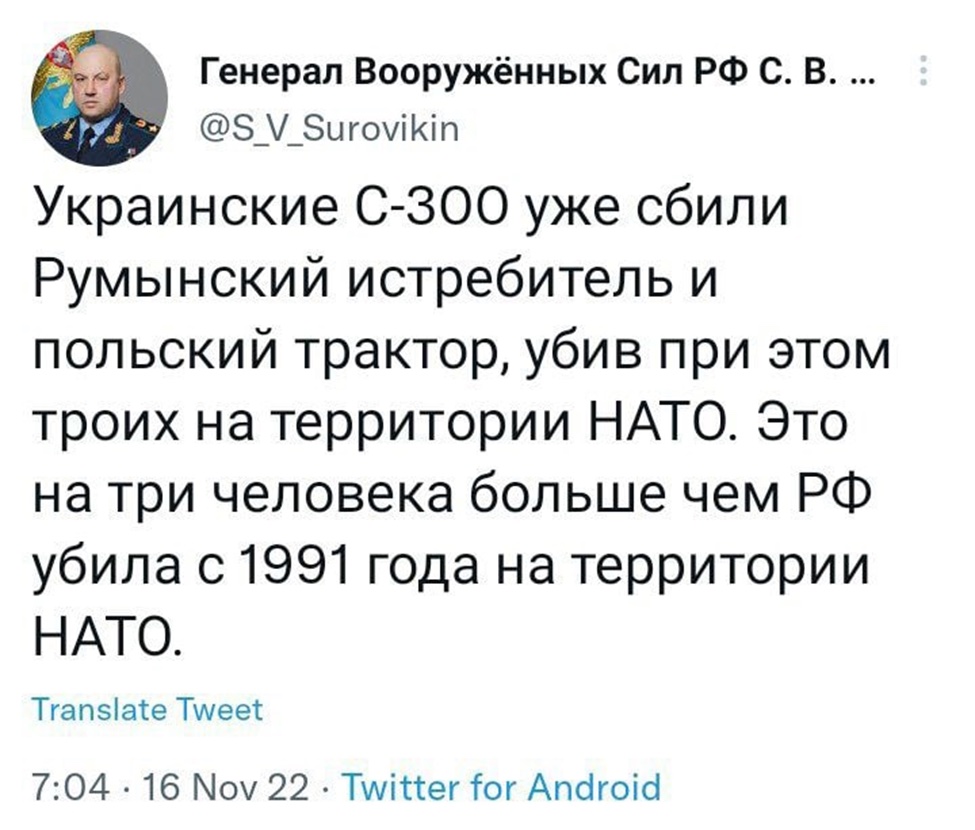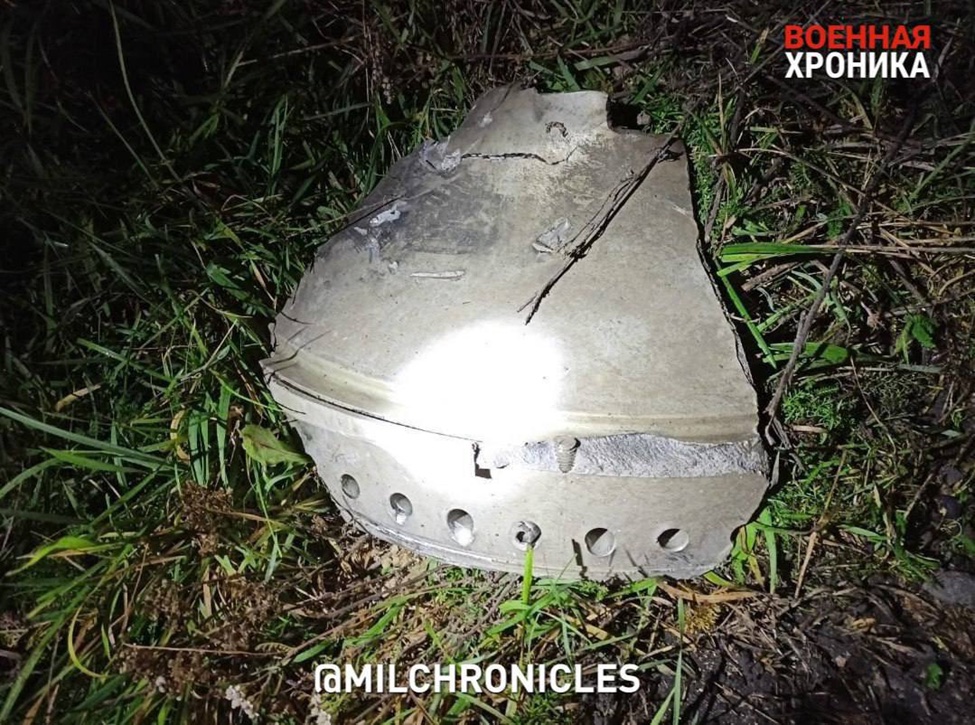Errant Missile Strike in Poland Ignites Frenzied Cries for WW3

 Deborah L. Armstrong
Deborah L. Armstrong
They must have thought they were safe, there within Poland’s borders, going about their jobs. The same jobs they had worked for years at the grain-drying warehouse in the little town of Przewodow.
60-year-old Bogdan Ciupek had reportedly just arrived with a tractor-trailer full of grain and 62-year old Bogusław Wos, the warehouse supervisor, was waiting to help him unload his cargo.
Up until 3:40PM that afternoon, it was just another Tuesday.
Neighbors said they heard “strange whistles” overhead and then a “massive explosion.”
Video of the aftermath shows a 6-foot crater next to the tractor-trailer, which was bowled over in the blast, its windows blown out.
Nearby buildings were also damaged and debris was strewn all around.
The missile, identified as an S-300 rocket, the kind manufactured during Soviet times, hit about six kilometers (four miles) from the Ukrainian border.
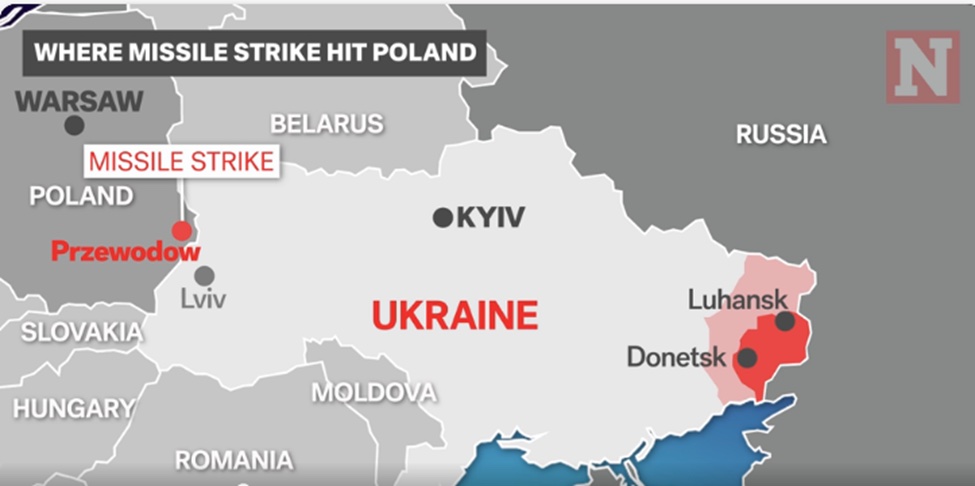
Map showing the proximity of the strike to Ukrainian borders. Graphic: MSM
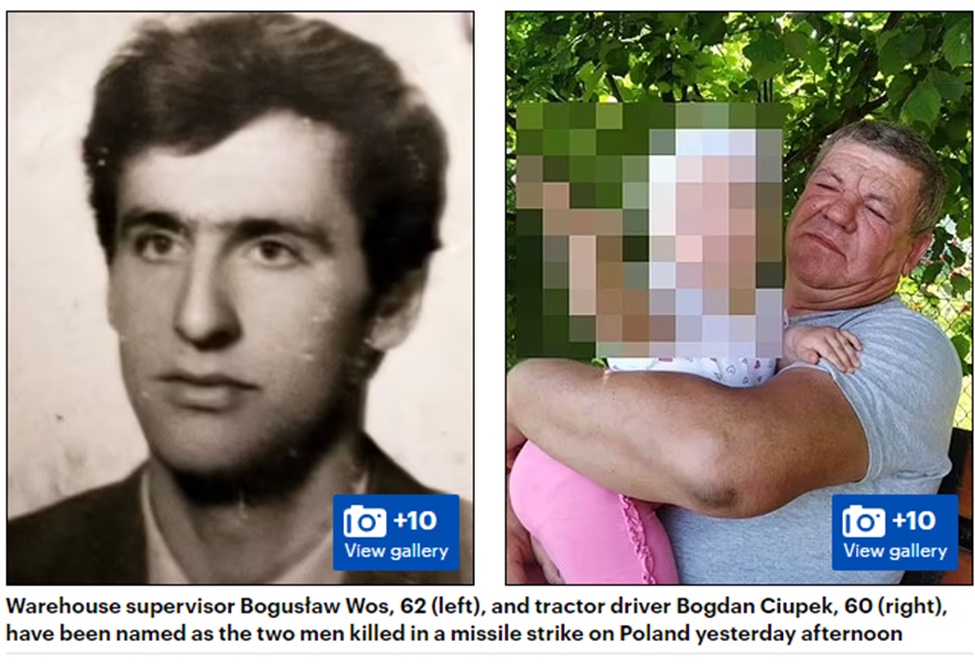
The two victims of the errant strike. Photo: Daily Mail
We now know that, according to reports in both Russian and Western media, the strike came during a large-scale Russian bombardment of Ukrainian infrastructure. Ukrainian anti-air defenses were attempting to intercept the Russian rocket, but their C-300 defense system misfired and went off course, striking within Polish borders instead.
That is where the similarities in media coverage end.
In the West, the rush to blame Russia was instantaneous and accusations flew even faster than rockets, with headlines screaming “Russia did it” before the facts were even known. Even when the origin of the rocket was known, Western media continued to blame Russia.
The Associated Press went so far as to claim that an unnamed “senior US intelligence official” had said it was a Russian strike on Poland, a NATO country. The lie spread like wildfire, igniting the fury of the masses already steeped in propaganda against “the Russian aggressor.”
Mainstream news outlets parroted the narrative that Poland had been struck by a “Russian-made” missile, which is at best a disingenuous framing of the fact that the inadvertent strike came from a Soviet-era surface-to-air missile system still in use by Ukraine. Headlines from mainstream US media like The New York Times, CNN and NBC all repeated the misleading “Russian-made” framing, as did the AP’s own correction to its false report that Poland was struck by Russia.
The Polish Defense Ministry initially blamed Russia for the airstrike and Ukrainian President Volodymyr Zelensky immediately called for an Article 5 response to this “attack” on a NATO country: “This is a Russian missile attack on collective security! This is a really significant escalation! Action is needed!” he said in a video address Tuesday. By Wednesday, the Ukrainian leader was still insisting that Russia had attacked Poland, despite ample evidence to the contrary.
For a moment there, the threat of nuclear retaliation began to feel very real.
Fortunately, saner heads prevailed and the actual facts of the story began to emerge, casting doubt on the mass media’s assertion that “Russia did it.” Even US President Joe Biden stated, “I don’t want to say that until we completely investigate. It’s unlikely in the minds [sic] of the trajectory that it was fired from Russia.”
But even as the facts began to assert themselves, the damning headlines, blaming Russia, remained and were not updated. Clearly, those in charge of narrative management know full well that most people just skim through the headlines and don’t have the time, or interest, to delve much deeper.
NATO Secretary General Jens Stoltenberg admitted that the strike was “likely” caused by a Ukrainian air defense missile. “But,” he hastily added, “let me be clear, this is not Ukraine’s fault. Russia bears ultimate responsibility, as it continues its illegal war against Ukraine.”
Russia’s Defense Ministry declared, “Statements by various Ukrainian sources and foreign officials alleging that Russian missiles hit Przewodow are a deliberate provocation aimed at escalating things.”
The Russian Defense Ministry also stated that on November 15, Russian forces delivered precision strikes on Ukrainian military command posts and related power facilities. “All the missiles launched hit their designated targets precisely. All the facilities were hit,” the Defense Ministry’s press service said.
The ministry emphasized that the precision strikes were delivered against military targets solely on Ukrainian territory and at a distance of no closer than 35 kilometers (about 22 miles) from the Polish-Ukrainian border.

Permanent Representative of the Russian Federation to the United Nations Vassily Nebenzia. Photo: Spencer Platt/Getty Images/AFP
Russia’s permanent representative to the UN, Vassily Nebenzia on Wednesday accused Poland and Ukraine of trying to trigger a direct clash between Russia and NATO.
While speaking at a UN Security Council session, the Russian envoy condemned what he called “irresponsible statements made by the leaders” of Poland and Ukraine over the missile strike.
Referring to Zelensky’s call for NATO retaliation, the diplomat said, “I underscore that such claims are made by a person who cannot but be well aware that it had been Ukrainian air defense missiles that hit the territory of Poland.”
Had it not been for photo evidence from the scene, Nebenzia said, “all facts would have been concealed from the public, and Russia would have been proclaimed the guilty side.”
The Russian Defense Ministry said that its military experts had analyzed the photos from the scene and identified parts of the projectile “as elements of a missile from the S-300 air defense system used by the Air Force of Ukraine.”
Russian Aerospace Forces Commander, General Sergey Surovikin stated in a tweet: “Ukrainian S-300s have already shot down a Romanian fighter jet and a Polish tractor, killing three in NATO territory. This is three more people than Russia has killed since 1991 on the territory of NATO.”
Indeed, this is not the first time Ukrainian forces have hit the wrong target.
There are several versions of the S-300 missile, with various technical capabilities and ranges. But the maximum range of the standard missile is 150 kilometers (93 miles) according to the Center for Strategic and International Studies (CSIS).
I messaged Scott Ritter, a former UN nuclear weapons inspector and USMC intelligence officer who is well-versed in the capabilities of the S-300.
“The S-300 is incapable of the ranges required to reach Poland if fired from anywhere in Russian controlled territory,” Ritter replied. For a deeper dive on this topic, I highly recommend listening to Ritter’s informative analysis of the airstrike on his YouTube channel.
Forensic investigators on the scene of the airstrike immediately released photographs of the rocket’s remains, which were published in international media.
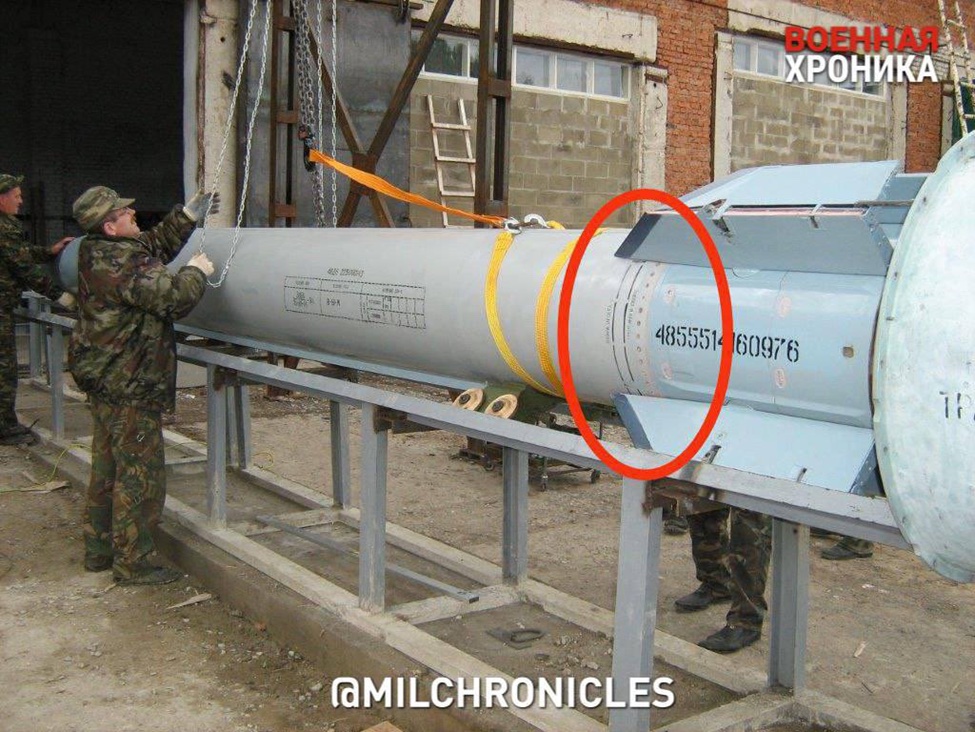
Above: Marked photos of the S-300 which struck Poland, and (bottom) an intact S-300 rocket: Milchronicles
According to a Russian Telegram channel called “MilChronicles,” an analysis of the photos reveals that the remnants are from the engine of a 5B55R missile, which is used by the S-300 air defense system.
“In particular, this is evidenced by the crimped fuel tank connection ring to the tail compartment of the 5B55R anti-aircraft missile, where synchronized thrust vector deflection system nodes with aerodynamic rudders (with a characteristic perforation of several dozen holes) are located,” MilChronicles stated in a post on the day of the strike. “S-300 systems are in service with the Ukrainian Air Defense Forces. Apparently, Kiev used them to try to repel an attack by the Russian Armed Forces. As a result, one of the S-300 missiles missed its trajectory and fell on the territory of Poland.”
CSIS confirms that “S-300 missiles are intended to shoot down aircraft, drones and incoming cruise and ballistic missiles. Full S-300 launchers include detection radars that track incoming targets. Missiles are equipped with guidance systems to automatically latch on to targets. Several individual missiles can be fired simultaneously at multiple targets.”
Scott Ritter added in his reply to me, that not only did the missile come from Ukraine, but “Moreover, US intelligence capabilities can track all missiles from point of launch to impact.”
This provokes the question, does US intelligence know who actually shot down Malaysia Airlines Flight 17 in 2014? The passenger flight from Amsterdam to Kuala Lumpur was shot down while flying over eastern Ukraine, killing all 283 passengers on board as well as the 15-member crew.
Western authorities and media have long-insisted that the aircraft was shot down by “Russian separatists,” despite the Russian claim to the contrary, and conclusive evidence, that two Ukrainian fighter jets shot down the passenger plane, and not a “Buk” surface-to-air missile.
Indeed, one of the first OSCE investigators to arrive at the MH17 crash site remarked that “There have been two or three pieces of fuselage that have been really pockmarked with what almost looks like machine-gun fire, very, very strong machine-gun fire.”
“Yes. The US knows who fired the missile that downed MH17,” Ritter said.
Regardless of who was really to blame for downing the passenger plane, a Dutch court today proclaimed the guilty parties following a “trial” in which those accused were not present, and had no defense.
The three men “convicted” are Igor Girkin, the former defense minister of the People’s Republic of Donetsk, his alleged subordinate, Major General Sergey Dubinsky, and Leonid Kharchenko, a Ukrainian national accused of leading a pro-Russian combat unit under the direction of Dubinsky.
The men remain “at large,” probably in Russian territory, where they are unlikely to face extradition. And if US intelligence has evidence that would exonerate them you can bet your next latte they’re not going to tell us any time soon.
Print this article
The views expressed herein are solely those of the author and may or may not reflect those of The Greanville Post. However, we do think they are important enough to be transmitted to a wider audience.

Unfortunately, most people take this site for granted.
DONATIONS HAVE ALMOST DRIED UP…
PLEASE send what you can today!
JUST USE THE BUTTON BELOW
| Did you sign up yet for our FREE bulletin? |
[premium_newsticker id=”211406″]

This work is licensed under a Creative Commons Attribution-NonCommercial 4.0 International License




